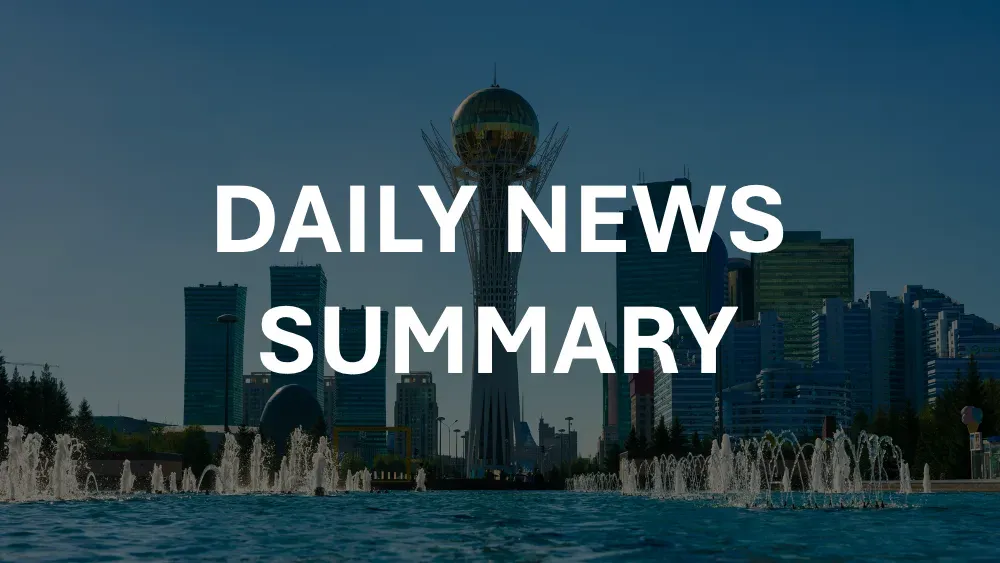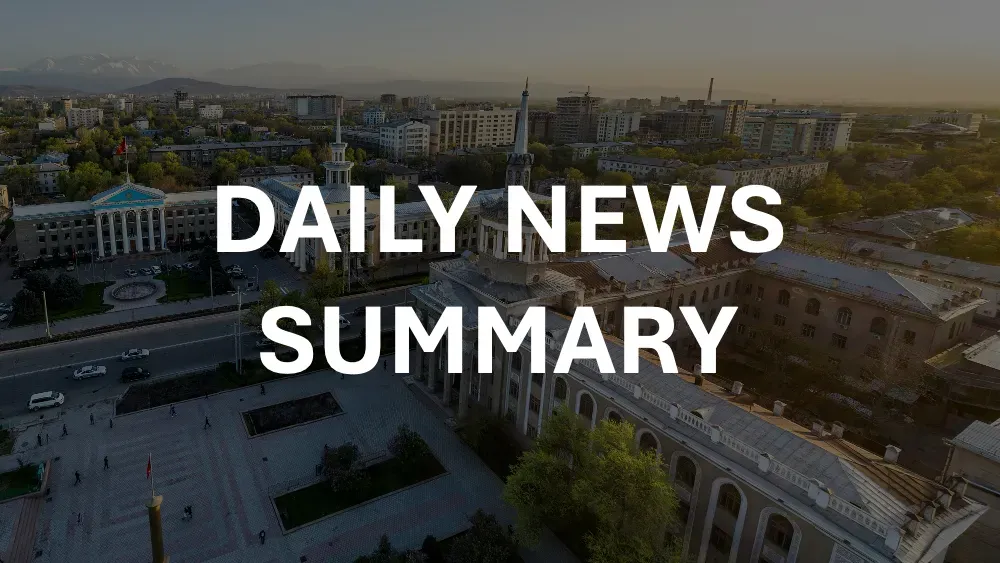📍 Get daily intelligence from Mongolia and Central Asia. Lexica News delivers local news that shapes global decisions—synthesized from local sources international media misses.
Mongolia's tourism sector achieved record-breaking performance in 2024, with 808,956 visitors generating $1.6 billion in revenue, marking a dramatic recovery from the pandemic's devastating 92% revenue collapse. This intelligence analysis examines how Mongolia's $4 billion infrastructure investment strategy positions the country to reach its ambitious target of 2 million annual tourists by 2030, transforming tourism from 3-4% of GDP to a targeted 10% economic contribution. International professionals operating in Mongolia's evolving hospitality landscape face both unprecedented opportunities and infrastructure constraints that define current market realities.
Current Tourism Landscape
Mongolia's tourism recovery demonstrates remarkable resilience following the COVID-19 pandemic's catastrophic impact, which reduced tourist receipts from $605 million in 2019 to just $49 million in 2020. The country's 2024 achievement of 808,956 visitors represents not only recovery but growth beyond pre-pandemic levels. Tourism revenue increased 2.8 times compared to 2022, with the sector now generating approximately $1.6 billion annually.
The visitor composition reflects Mongolia's geographic positioning, with China, Russia, and South Korea representing the majority of international arrivals, while the U.S. market contributed over 22,000 visitors in 2024. Winter tourism experienced particularly strong growth, with January 2024 recording 33,462 tourists, the highest winter season numbers in the country's tourism history.
Current infrastructure consists of 403 travel companies, 320 hotels, and 647 resorts and tourist camps, employing graduates from over 56 educational establishments. However, accommodation capacity faces significant constraints, with hotel occupancy rates averaging just 30% annually due to extreme seasonality, reaching above 60% only during four months per year.
The government's "Years to Visit Mongolia 2024-2028" initiative includes visa-free access for citizens of 34 countries until 2025, expanding total visa exemptions to 61 countries. Air connectivity improved substantially with United Airlines launching the first direct US-Mongolia route in May 2024, while direct flights now serve 155 destinations.
Documented Investment Experiences
Mongolia requires $4 billion in infrastructure investment to support its tourism growth targets, with the government creating low-rate, long-term loans for public-private collaboration. Current investment patterns reveal both progress and persistent gaps in meeting international hospitality standards.
International hotel development shows mixed results in Ulaanbaatar, where establishments like Shangri-La and Kempinski operate alongside the recently opened ibis Styles and the under-construction five-star Mövenpick. However, accommodation provision outside the capital remains decidedly limited, with provincial hotels typically priced between $25-50 per night and few meeting international standards.
The Asian Development Bank's $70 million investment across two sustainable tourism development phases demonstrates international commitment to Mongolia's tourism infrastructure. Phase 1 focused on Khuvsgul Lake and Onon-Balj National Parks, which received 89,000 and 20,400 visitors respectively in 2017. Phase 2, launched in 2021 with $32 million funding, targets western Mongolia's three aimags, expecting to benefit 16,296 local residents through enhanced tourism-related skills and income.
Luxury ger camp development presents particular opportunities and challenges. While 300 ger camps existed across Mongolia as of 2012, few meet international luxury standards. Investment in sustainable, internationally-standard luxury ger camps attracts growing interest from hospitality developers, though remote locations and seasonal accessibility constraints affect operational viability.
Private sector experiences vary significantly by location and market segment. Companies operating in Ulaanbaatar report steady occupancy during peak seasons but struggle with winter months when capacity utilization drops below 30%. Remote area operations face infrastructure limitations including unreliable electricity, limited water access, and challenging road conditions that restrict seasonal accessibility.
Stakeholder Operational Realities
Government data positions tourism as contributing 7.2% of GDP in 2019, generating $989.2 million and supporting 88,700 jobs. However, pandemic recovery patterns reveal disparities between official projections and business experiences. While 2024's $1.6 billion revenue represents significant growth, hospitality operators report that revenue distribution remains heavily concentrated in summer months, creating cash flow challenges during extended winter periods.
Tourism employment statistics show 36,480 direct employees in accommodation and food service segments, with 19,180 in accommodation and 17,300 in food and beverage services. An estimated 52,220 workers and entrepreneurs derive livelihoods from tourism activities. However, employment seasonality mirrors visitor patterns, with many positions becoming temporary or requiring workers to seek alternative winter employment.
International tour operators report varying experiences based on market positioning. Companies focusing on adventure and eco-tourism, which attracts 47% of visitors, experience stronger demand consistency than mass market operators. Cultural tourism operators note growing interest in authentic nomadic experiences, though infrastructure limitations in remote areas create operational complexity and higher costs.
Hotel operators document significant regional variations in performance. Ulaanbaatar properties report occupancy rates above 60% during peak months, while provincial hotels struggle with lower rates and shorter seasons. New hotel development faces particular challenges in provincial areas where return on investment extends beyond typical hospitality industry standards due to seasonal constraints.
The Mongolia Tourism Association, representing 280 active members, reports that over 80% of leisure tourists utilize member services, indicating strong industry organization. However, members document persistent infrastructure challenges including unreliable utilities, limited internet connectivity, and seasonal road access that affect service delivery standards.
International airlines report mixed results from Mongolia service expansion. While United Airlines' inaugural Mongolia route in 2024 represents growing connectivity, seasonal demand fluctuations and limited ground infrastructure outside Ulaanbaatar create operational challenges for sustained year-round service viability.
Investment Climate and Regulatory Context
Mongolia's investment incentives for tourism include tax exemptions up to 10% of total investment for high-rated hotel construction, though practical implementation experiences vary among investors. Foreign investment protection mechanisms exist, but hospitality sector investors report navigating complex regulatory environments particularly regarding land use rights and environmental compliance in protected areas.
The government's $4 billion infrastructure requirement encompasses roads, hotels, camps, and supporting facilities. Current financing mechanisms include government-backed low-interest loans and international development funding, though private sector access to affordable capital remains limited. The Asian Development Bank's phased $70 million commitment demonstrates international lender confidence, but represents a small fraction of total investment needs.
Construction costs in Mongolia exceed regional averages due to remote locations, seasonal building constraints, and imported material requirements. Hospitality developers report construction timelines extending 25-40% beyond initial projections due to weather-related delays and logistical challenges. Operating cost structures remain higher than comparable regional destinations due to seasonal staffing needs, utility costs, and supply chain complexity.
Environmental regulations increasingly affect tourism development, particularly in protected areas where sustainable tourism models must balance conservation with economic development. The ADB-funded projects emphasize community-managed facilities and nature-based solutions, setting precedents for future development standards.
Tourism-related business licensing processes require navigation of multiple governmental departments, with processing timelines varying significantly between Ulaanbaatar and provincial locations. International hospitality chains report extended approval timelines for franchise agreements and management contracts, affecting project development schedules and investment returns.
Understand Mongolia Like an Insider
This analysis draws from extensive research, but the story continues to evolve daily. Lexica synthesizes breaking developments from dozens of Mongolian news sources—from mining policy changes to local protests that never make international headlines.
Our daily intelligence briefs help executives, diplomats, and researchers track:
- Regulatory shifts affecting foreign investment
- Local opposition to development projects before they escalate
- Market dynamics that signal opportunity or risk
- Political developments that reshape the business landscape
Regional Competitive Positioning
Mongolia's tourism performance relative to regional peers reveals both advantages and constraints in market positioning. While China dominated global tourism recovery in early 2024, Mongolia's unique cultural and natural offerings provide differentiation opportunities despite infrastructure limitations.
Compared to Kazakhstan's more developed tourism infrastructure, Mongolia offers authentic nomadic cultural experiences but faces challenges in accommodation standards and accessibility. Kazakhstan's stronger urban tourism infrastructure contrasts with Mongolia's strength in authentic cultural and adventure tourism experiences.
Russia's vast territory and established Trans-Siberian tourist routes provide regional competition, though political conditions and international sanctions create opportunities for Mongolia to capture diverted tourism flows. Mongolia's visa-free policies for 61 countries provide competitive advantages over more restrictive neighboring markets.
Central Asian competitors like Kyrgyzstan and Uzbekistan offer established Silk Road tourism products with better developed urban infrastructure, but lack Mongolia's unique nomadic culture and pristine wilderness areas. Mongolia's positioning as the "last nomadic civilization" provides differentiation that infrastructure improvements could leverage more effectively.
China's domestic tourism market represents both opportunity and challenge for Mongolia. Chinese visitors traditionally comprised the largest source market, but evolving Chinese travel preferences and economic conditions affect demand patterns. Mongolia's proximity to major Chinese population centers provides geographic advantages that infrastructure development could enhance.
Regional air connectivity improvements, including United Airlines' new route, position Mongolia competitively for North American markets where competitors lack direct access. However, European market access remains limited compared to Central Asian alternatives with better connectivity through regional hubs.
Infrastructure Development Progress
Current infrastructure development follows the National Program on Tourism Development 2016-2030, prioritizing protected areas in northern, central, and eastern Mongolia. Implementation reveals both progress and persistent gaps in meeting international hospitality standards.
Road infrastructure improvements show measured progress, with government commitments to upgrade access routes to key tourist destinations. However, many attractions remain accessible only via unpaved roads that limit seasonal access and increase operational costs for tour operators. Weather-related accessibility constraints continue to affect tourism business viability in remote areas.
Airport infrastructure outside Ulaanbaatar remains limited, constraining domestic connectivity for international visitors. While direct flights serve 155 destinations globally, domestic flight networks require expansion to support regional tourism development beyond the capital.
Telecommunications infrastructure shows improvement in major tourist areas, though remote locations still experience limited internet connectivity affecting international visitor expectations and business operations. Mobile coverage expansion supports growing adventure tourism activities but remains inconsistent in wilderness areas.
Water and sanitation infrastructure development varies significantly between urban and rural tourist areas. The ADB's sustainable tourism projects specifically address sanitation needs through gender-sensitive facilities and waste management systems, setting standards for broader implementation.
Power grid reliability improvements support urban hotel development but remote tourism facilities continue relying on generators or alternative energy sources. Solar power adoption increases among ger camps and remote accommodations, though initial investment costs remain high relative to traditional energy sources.
Conclusion
Mongolia's tourism recovery demonstrates both remarkable resilience and persistent structural challenges that define current market realities. The achievement of 808,956 visitors and $1.6 billion revenue in 2024 validates the sector's potential, yet the requirement for $4 billion infrastructure investment underscores the gap between current capacity and 2030 ambitions. International professionals operating in this environment encounter opportunities in authentic cultural tourism and adventure travel segments, while facing operational constraints from seasonal demand concentration and infrastructure limitations.
The government's strategic positioning through visa liberalization, international partnerships, and development funding creates favorable conditions for tourism investment. However, success patterns indicate that businesses achieving positive returns typically combine seasonal flexibility, premium positioning, and strategic location selection rather than pursuing mass market approaches. Regional competition analysis reveals Mongolia's unique cultural differentiation advantages, though infrastructure gaps limit competitive positioning against more developed neighboring markets.
Key metrics worth monitoring include infrastructure investment realization rates, seasonal demand distribution changes, and accommodation capacity expansion outside Ulaanbaatar. The progression of ADB-funded sustainable tourism projects provides implementation benchmarks for broader development standards. Weather pattern impacts on accessibility, Chinese market demand evolution, and international flight connectivity expansion will significantly influence whether Mongolia achieves its ambitious 2030 targets of 2 million annual visitors and 10% GDP contribution from tourism.
FAQ Section
How sustainable is Mongolia's 15% annual growth target needed to reach 2 million tourists by 2030?
Mongolia achieved 25% growth in the first seven months of 2024, indicating short-term viability, but sustaining 15% annually requires addressing infrastructure constraints. Current capacity limitations, particularly in accommodation and transportation, may constrain growth without the planned $4 billion infrastructure investment. Seasonal visitor concentration during four peak months suggests growth sustainability depends on developing winter tourism and extending the peak season.
What infrastructure investments offer the highest returns for international hospitality developers?
Data indicates luxury ger camps and mid-tier provincial hotels show strong demand with limited supply. The government's 10% tax exemption for high-rated hotel construction, combined with growing adventure tourism demand (47% of visitors), suggests opportunities in authentic cultural accommodation. However, remote locations require significant infrastructure investment in utilities and access roads that affect return timelines.
How do Mongolia's occupancy rates compare regionally and what drives the 30% annual average?
Mongolia's 30% annual occupancy reflects extreme seasonality, with rates above 60% only four months yearly. This compares unfavorably to regional destinations maintaining 50-60% annual rates. The concentration of visits during summer months (June-August) creates operational challenges not experienced in year-round destinations like Thailand or Vietnam.
What are the actual operational costs for tourism businesses in Mongolia versus regional competitors?
Construction costs exceed regional averages by 25-40% due to remote locations, seasonal building constraints, and imported materials. Operating costs remain higher due to seasonal staffing, utility expenses, and complex supply chains. However, Mongolia's unique positioning allows premium pricing that can offset higher operational costs for well-positioned businesses.
How reliable are government tourism projections given past performance and current infrastructure constraints?
Government projections show mixed reliability. The 2024 target of 808,956 visitors was achieved, suggesting accurate near-term forecasting. However, the 2030 target of 2 million visitors requires infrastructure development and investment levels that have not yet been fully realized. The $4 billion infrastructure requirement represents a significant challenge for achieving long-term projections.
What factors most influence successful tourism business operations outside Ulaanbaatar?
Successful provincial tourism operations typically combine seasonal flexibility, authentic cultural offerings, and strategic partnerships with international tour operators. Businesses reporting positive returns focus on high-value, low-volume tourism rather than mass market approaches. Access to reliable transportation, basic utilities, and emergency services significantly influence operational viability.
How does Mongolia's tourism employment compare to economic contribution in neighboring countries?
Mongolia's tourism sector employs approximately 88,700 people (7.6% of employment) while generating 7.2% of GDP, indicating higher productivity per worker than regional averages. However, seasonal employment patterns create income instability affecting workforce retention and service quality standards compared to year-round tourism economies.
Track Mongolia's Critical Minerals Sector with Local Intelligence
The rare earth story exemplifies why local sources matter. While international media reports MOUs and ministerial visits, Mongolian outlets cover the community protests, water disputes, and regulatory changes that actually determine project outcomes.
Lexica delivers what you're missing:
- Daily briefs at 7AM Ulaanbaatar time covering 40 top stories from politics to economics
- Full-text synthesis from sources in Mongolian
- Searchable archive to track how today's announcements connect to yesterday's promises
- Multi-country coverage across Central Asia for regional context
Whether you're evaluating investment opportunities, monitoring supply chain risks, or analyzing geopolitical developments, local intelligence reveals what international headlines obscure.










